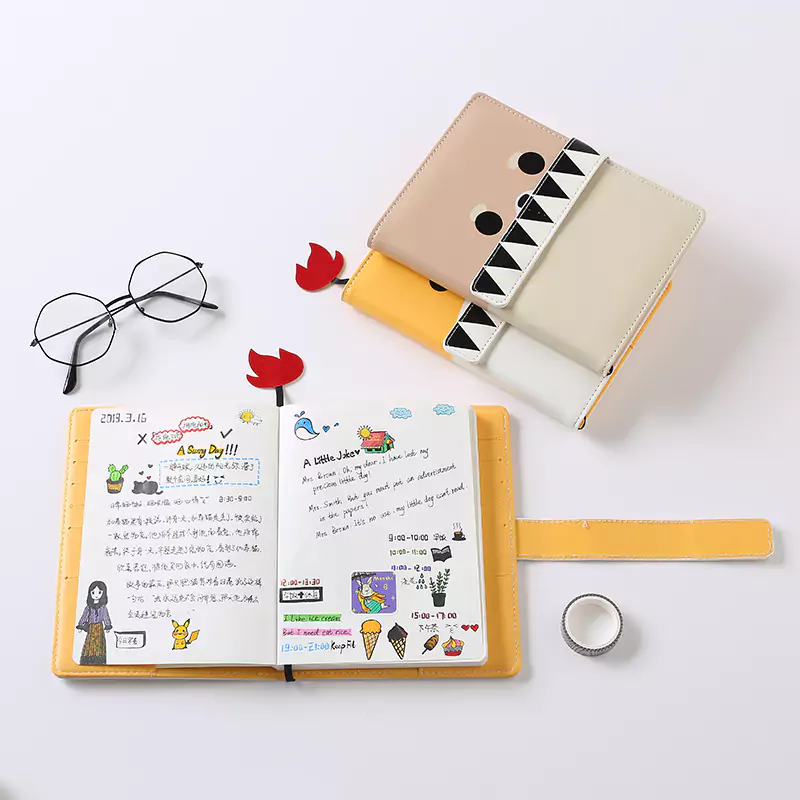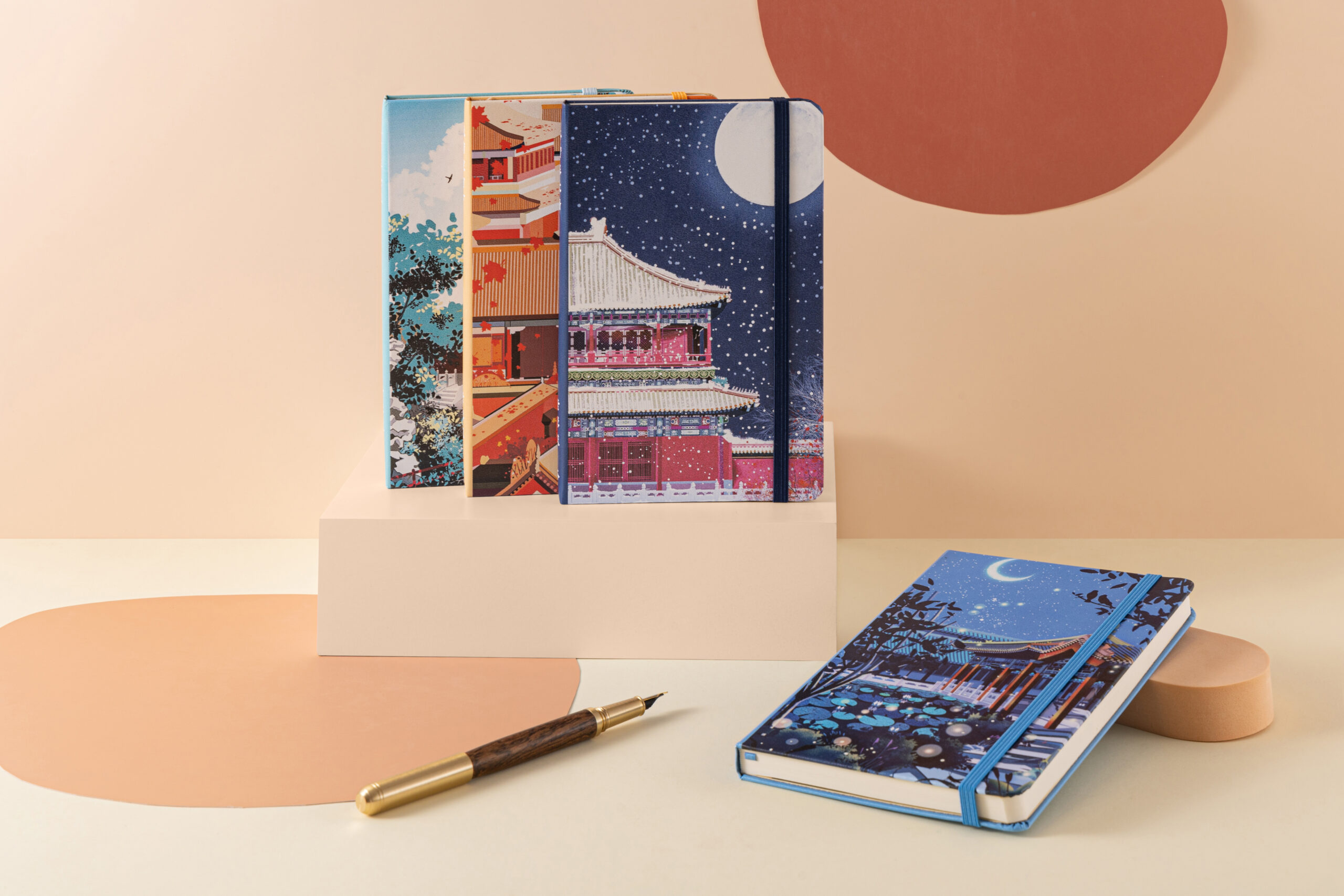Technological innovations have made notebook manufacturing a more complex and evolved industry than ever before. New technology, like digital printing machines and automated machinery, has minimized human interaction, which in turn has increased factory efficiency by reducing errors and improving processes, thereby providing better products. Advancements such as automatic machinery and digital printing technology have improved efficiency, reduced human error, and resulted in the production of high-quality products.
Understanding Notebook Manufacturing Processes
Technological Innovations in Production
Notebook manufacturing has undergone major improvements over the years as a result of technological advancements. These innovations have made production more efficient and cost-effective. Automation machines and digital printing technology ensure effectiveness and minimize human error, which helps in producing quality products. Such innovations are the key to a sustainable competitive identity and addressing a growing need for variety in notebook designs.
Raw Materials and Their Impact on Quality
The choice of raw materials is pivotal in determining the quality of notebooks. Manufacturers prioritize sourcing high-grade materials to ensure durability and aesthetic appeal.
Types of Paper Used
Notebooks use different paper types based on the purpose of the notebook. Some of them are the most popular, like regular wood pulp paper, stone paper, coated paper, watercolor paper, and cotton paper. Each type has its characteristics—texture, weight, etc.—that affect how you feel when you write and what you will use it for.
Binding Techniques
Notebooks also have binding techniques that not only determine their functionalities but also make them last longer. The common types of binders used are saddle stitching, spiral binds, and perfect binds. There are many specific benefits to each of these techniques. Spiral binding, for example, allows notebooks to remain flat in use, making them ideal for writing notes in a work setting. Each technique provides different benefits.
Analyzing Size Preferences in Notebooks
Commonly Preferred Sizes in the Market
Notebook sizes vary widely, catering to different user preferences and needs. The most popular sizes often balance usability with portability.
A4 and B5 Sizes: Features and Uses
Sizes like A4 and B5 are common because they are versatile. When it comes to work use, with plenty of space for lots of detail, A4 notebooks win out. With a bit more brawn, B5 is the ideal middle ground between thoughtful portability and just enough real estate for serious note-taking. This makes it the desk companion of choice for both students and professionals. B5 is well-balanced between being easy to carry with you and big enough to write on comfortably, making it suitable for both students and professionals.
Pocket-sized Notebooks for Portability
Pocket notebooks are readily available for easy access and can be conveniently placed in bags or pockets. They are perfect for quick notes on the go. As for the market, these notebooks are aimed at those who prioritize mobility without sacrificing features. By nature, they are ideal for quick notes and cater to people who value mobility without compromising functionality.
Factors Influencing Size Choice
Several factors influence notebook size preferences among consumers.
User Demographics and Needs
Demographics matter a lot. Students would need larger sizes, such as A4, for educational needs, and professionals would need more compact sizes to suit their travel patterns. Selection based on needs like note-taking or sketching also depends on personal preferences. For example, what you want the tablet for—whether it is note-making, sketching, etc.—only then does that choice come, which also depends on your personal preferences.
Trends in Educational and Professional Sectors
The institutions tend to set the standards for the size of the notebooks that students are required to carry. At the same time, corporate settings can positively shape the preference for formal sizes, like A4 or letter-sized notebooks, that meet the standards of professional documentation. Likewise, some people, due to corporate environments, might have a preference for more formal, larger sizes (like A4 or letter-sized) notebooks comparable to professional document styles.
LABON, a notebook manufacturer founded in 2003, focuses on providing notebooks for multiple applications and different consumers around the world. That is how "Labon Stationery," produce high-quality notebooks for export to various parts of the world, which was born with a commitment to "quality first, honesty in business." Learn more about their services here.

LABON is also inclined to use materials that could be more eco-friendly, as we are now trending towards green production. With custom solutions designed for distinct needs, their full service encompasses automotive and beyond, with rigorous artisan craftsmanship and futuristic designs assuring all customers are satisfied. They offer a full-service experience with bespoke solutions for unique needs and a commitment to satisfactory customer service through skilled craftsmanship and innovative designs.
For those seeking premium quality notebooks with personalized options that enhance brand recognition or workplace culture," Labon offers an array of custom-branded stationery items crafted with attention to detail." Explore their customizable solutions.
LABON's Approach to Notebook Size Variations
Product Range Offered by LABON
LABON has gained ground as a notebook manufacturing leader with an impressive range of products to suit different consumer preferences. They produce normal hard notebooks, soft notebooks, coil books, and various types of gift boxes. They have something for everyone, whether you need a notebook for a professional setting or a stylish journal for your personal life.
Customization Options for Diverse Needs
One of the advantages that LABON cases have is the option for customization. They offer dedicated OEM and ODM services, which are useful for designing a notebook based on our requirements. This feature is especially beneficial for businesses looking for specifically branded corporate-style stationery products that represent their corporate identity. With the ability to produce on demand using state-of-the-art production technology and management systems, LABON can process even customized orders with high-quality standards.
Popular Models and Their Specifications
LABON offers models with PU, linen, coated paper, and leatherette paper cover designs that are very popular. These not only enhance the aesthetic appeal but also contribute to the durability of the notebooks. From conventional wood pulp paper notebooks to stone paper, coated paper, watercolor paper, and cotton paper notebooks, the assortment of different types of paper ensures that each journal fulfills its intended purpose.
Market Positioning and Consumer Feedback
Strategies for Meeting Consumer Demand
This positions LABON with a focus on quality and innovation. They have established themselves as a reliable name in the market by adhering to the principles of quality first and integrity in business. This aligns them with the growing consumer demand for eco-friendly products by promoting sustainable development through the use of eco-friendly materials.
Insights from Customer Reviews
LABON products are developed in correspondence with customer reviews. Their notebooks typically earn positive reviews for their fine detail and simple design. Customization of products to serve specific requirements is something customers value. This understanding drives a continuous cycle of refinement and new process development at the manufacturing level for LABON.
Future Trends in Notebook Manufacturing and Design
Emerging Consumer Preferences
As notebook consumer preferences change, consumers want personalized and eco-friendly notebooks. With consumers gaining awareness of their environmental footprints, notebooks made from sustainable materials are in higher demand. As they become more sensitive to environmental impact, the demand for notebooks produced from sustainable materials is rising.
Innovations Expected in Notebook Design
Smart Notebooks with Technological Features
They are making smart notebooks with integration into digital and cloud systems. These innovations appeal to consumers who are accustomed to technology and want a simple transition from traditional writing tools to digital ones. Such innovations serve the needs of digital-native consumers, who expect seamless movement between analog writing tools and digital avenues.
Minimalistic Designs Gaining Popularity
Consumers who are into minimalism want simple and elegant stationery products that do not look cluttered. This change mirrors a slight societal transition towards minimalism in lifestyle, resulting in notebook brands that focus on features and not unnecessary fluff. Apart from usability, this trend indicates a larger cultural shift towards minimalism in lifestyle choices. This shift has also influenced notebook designs, which now focus solely on essentials without the bells and whistles.
LABON stays at the forefront of the industry by using these trends in its product development. As a leading international notebook supplier with more than 20 years of experience and a wide sales network across Europe and America, LABON has always ensured the provision of the best quality notebooks to satisfy the changing needs of consumers all over the world.

